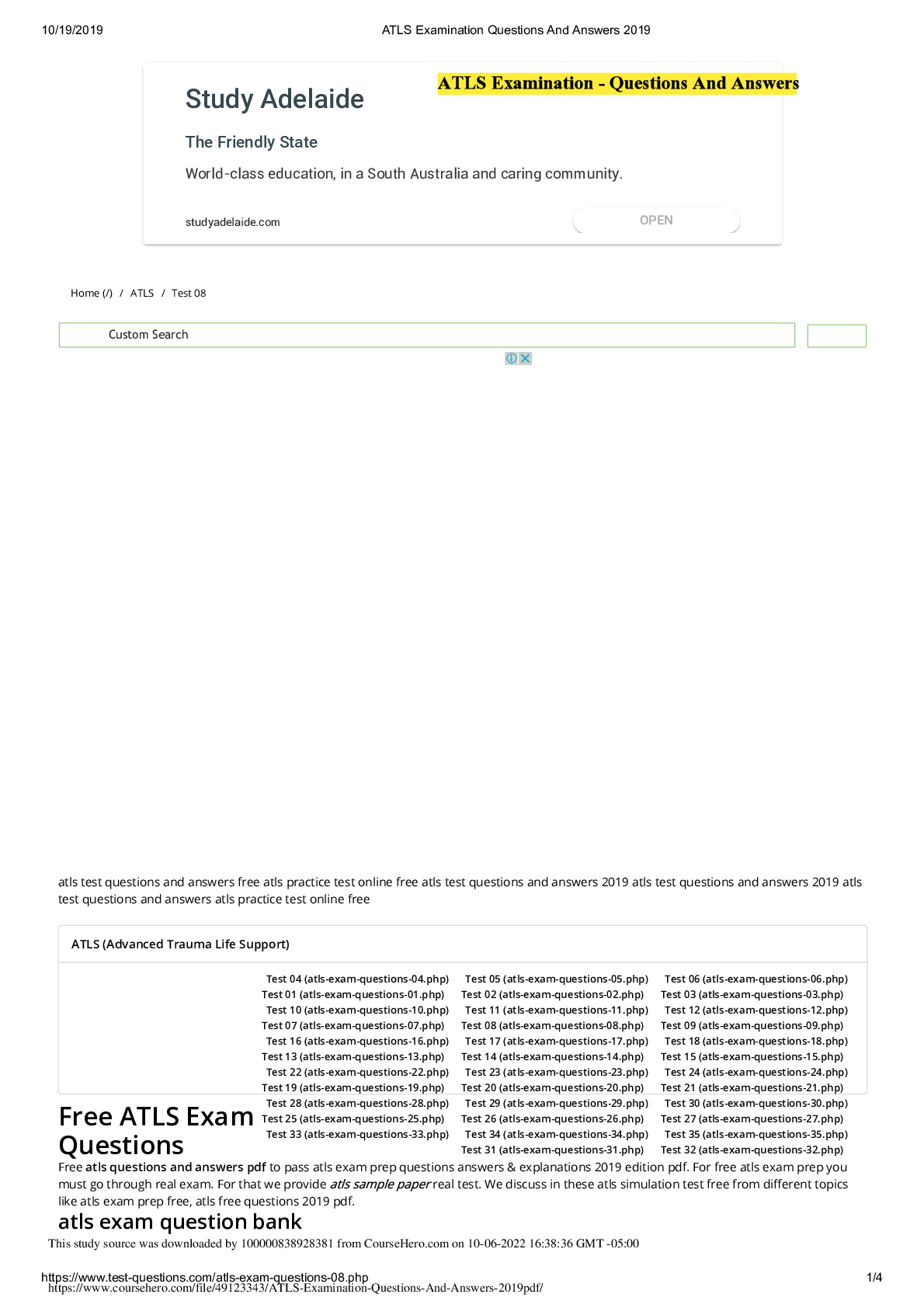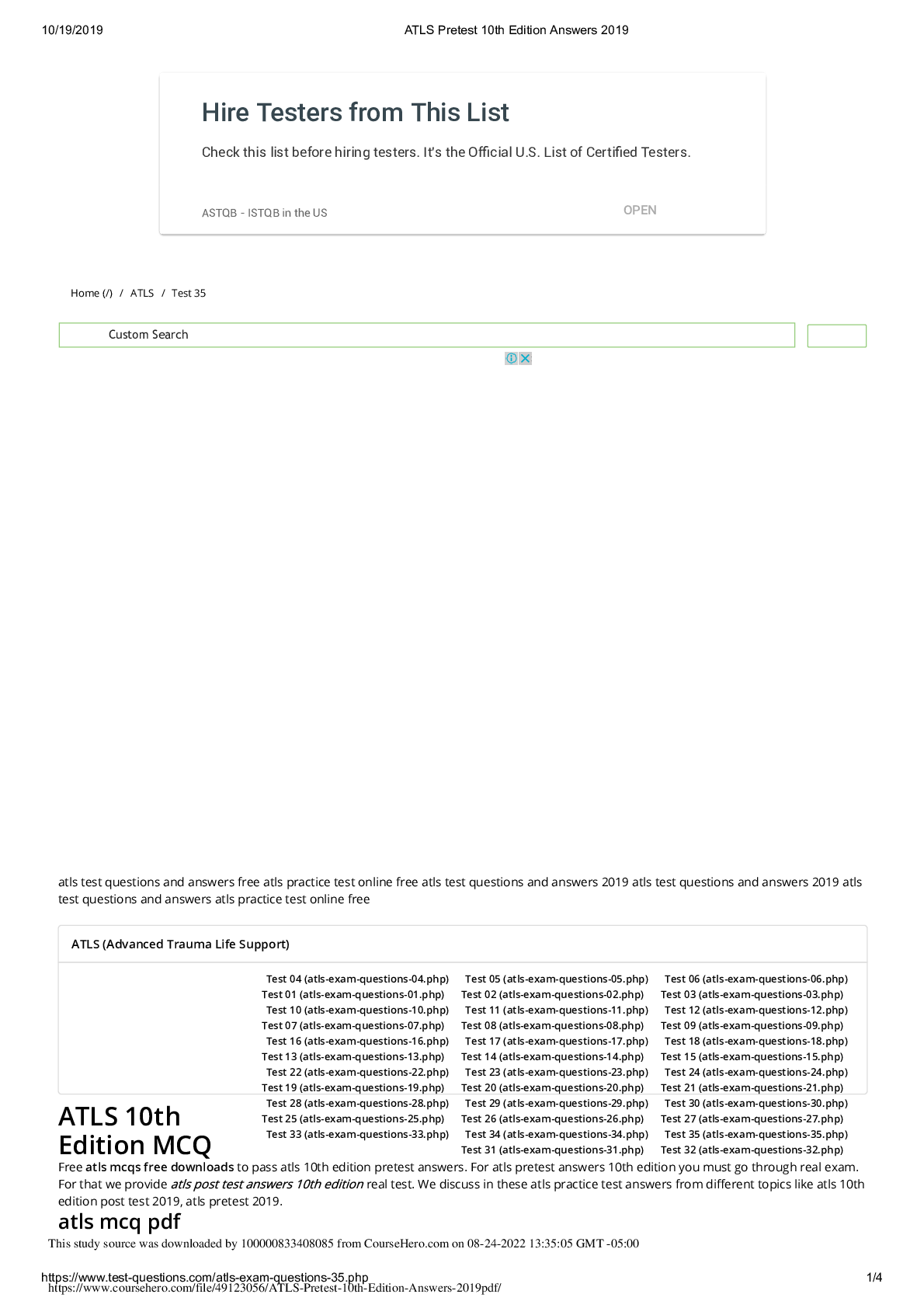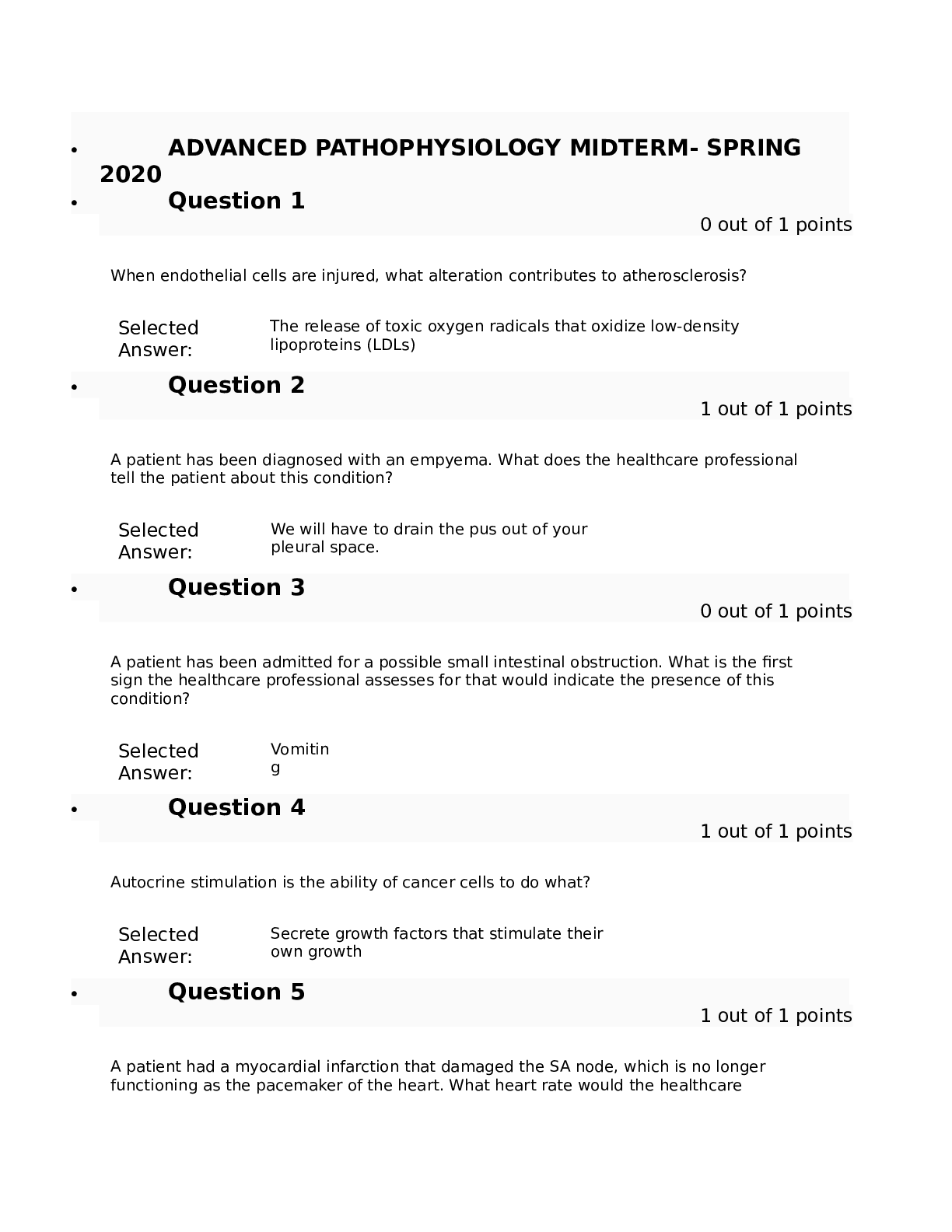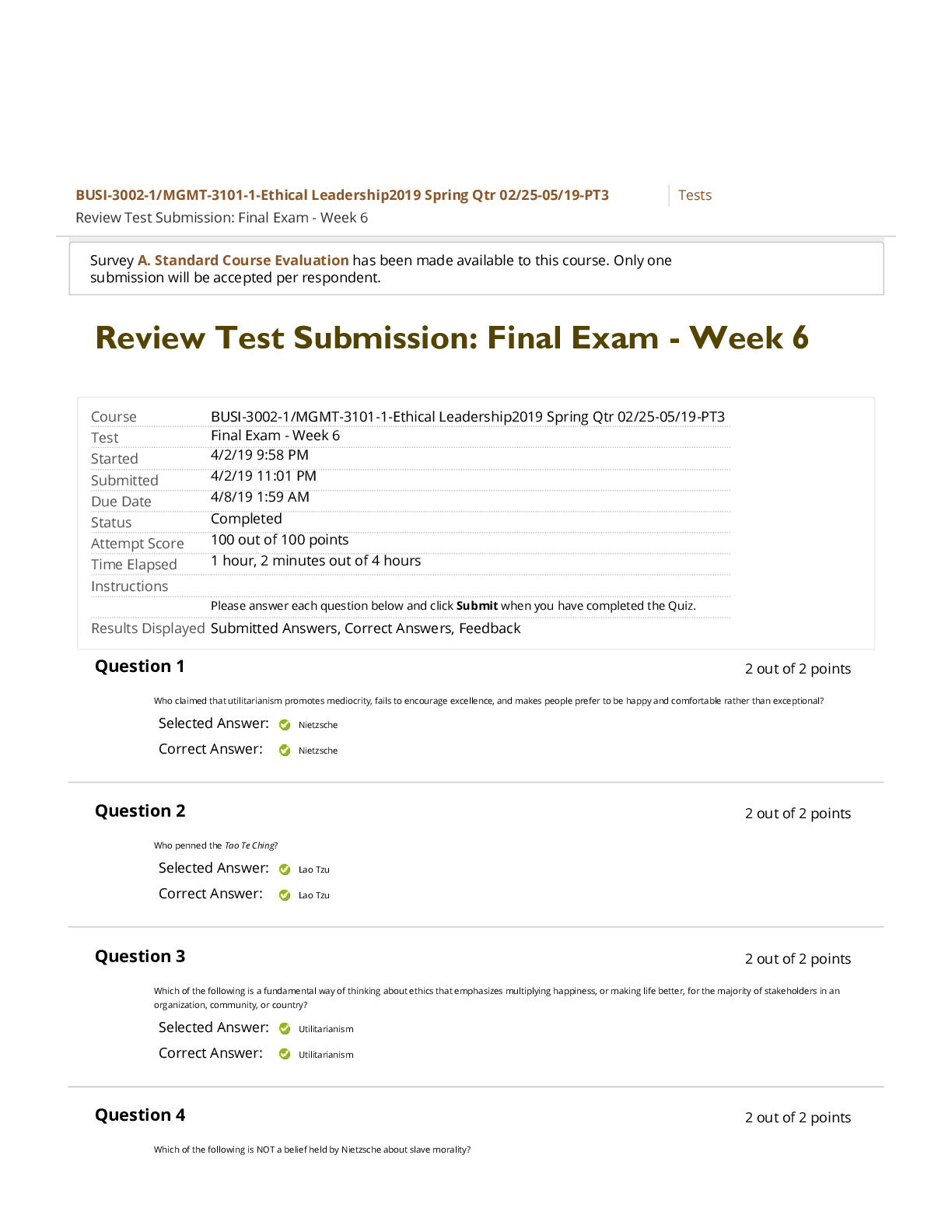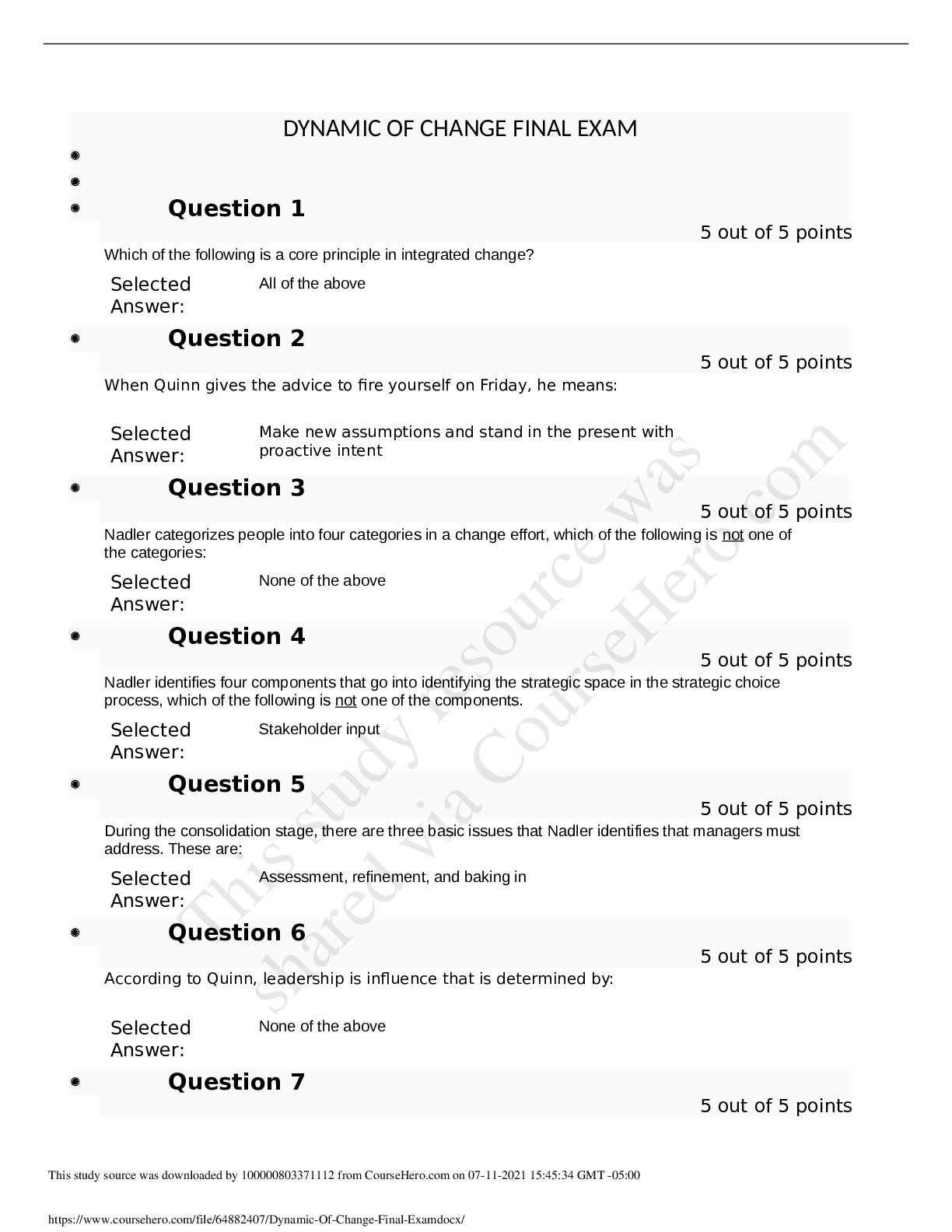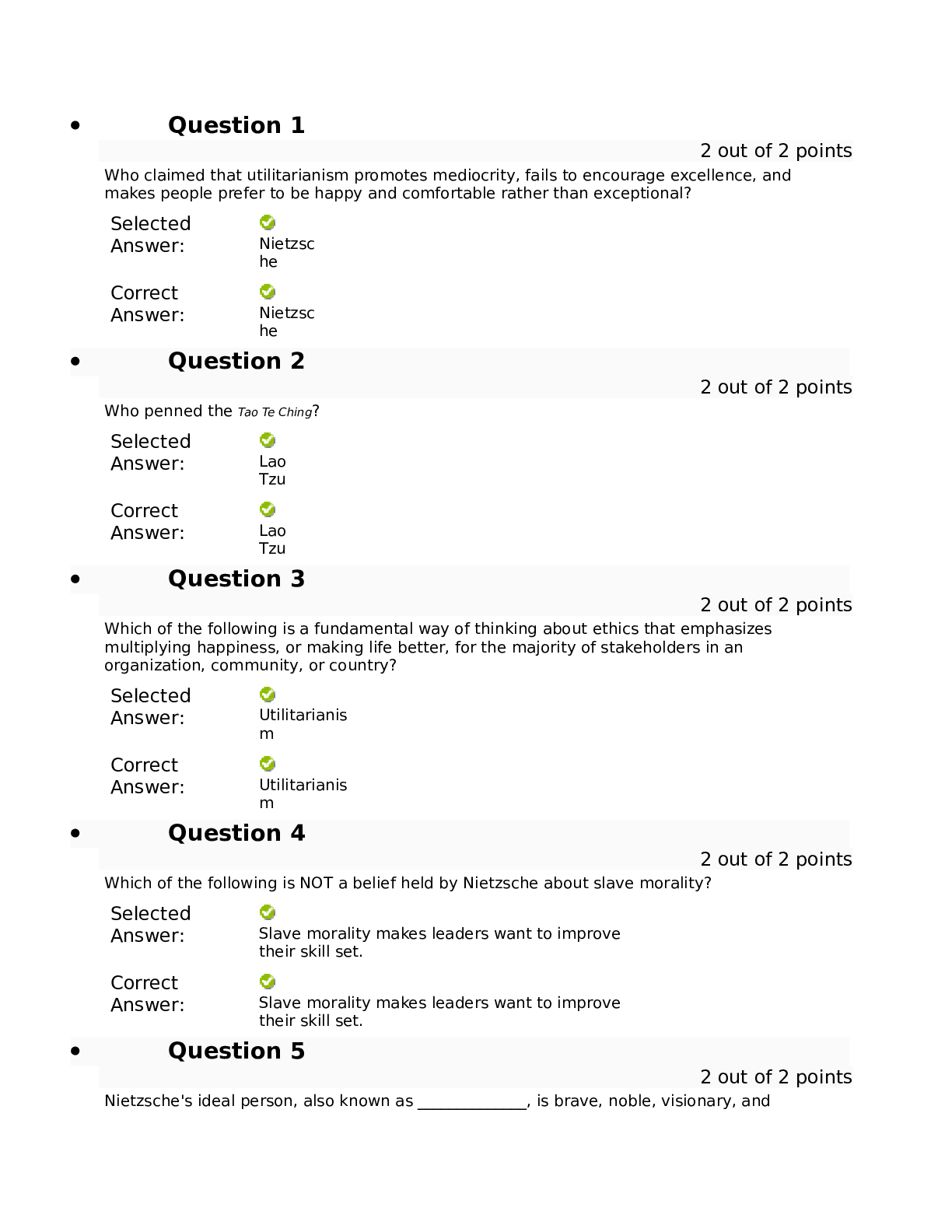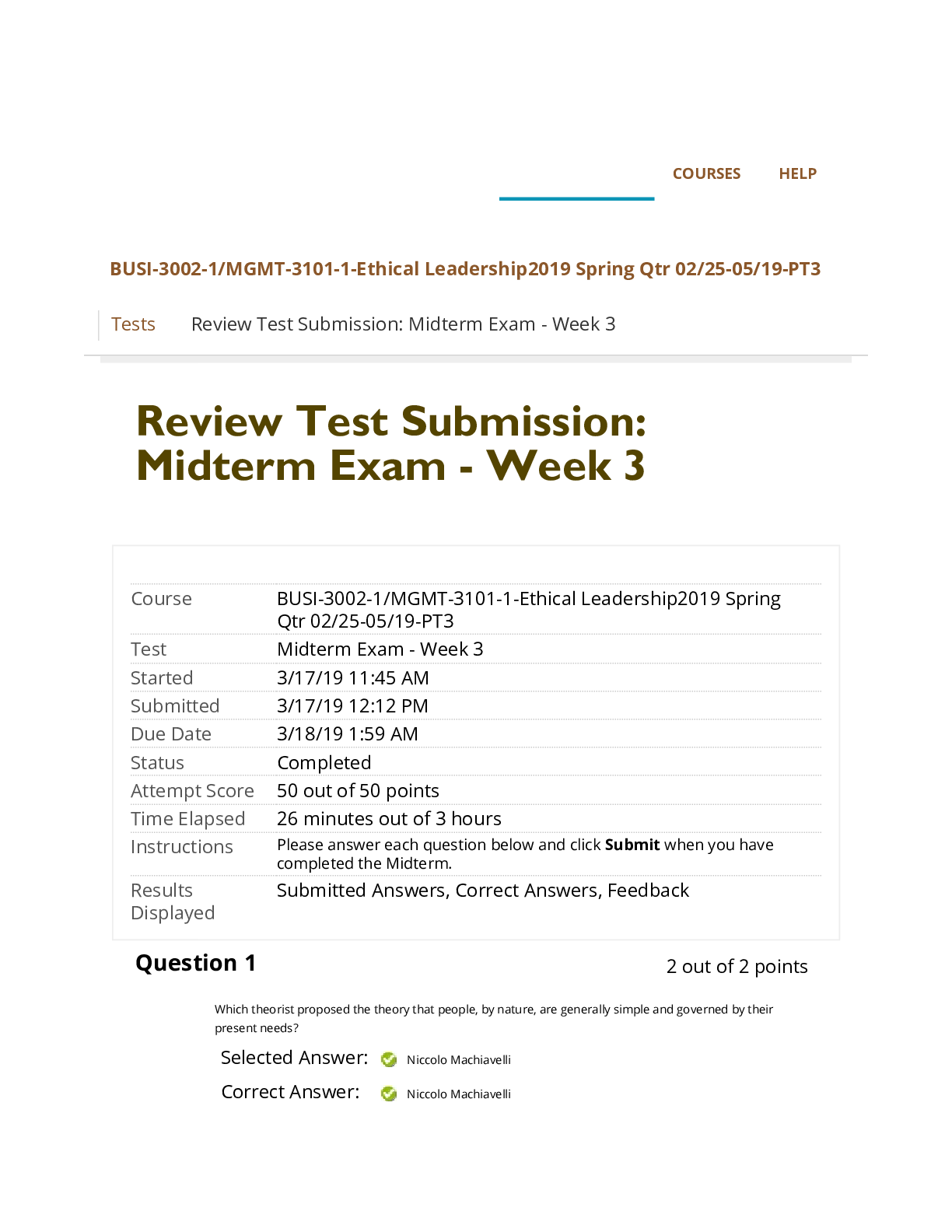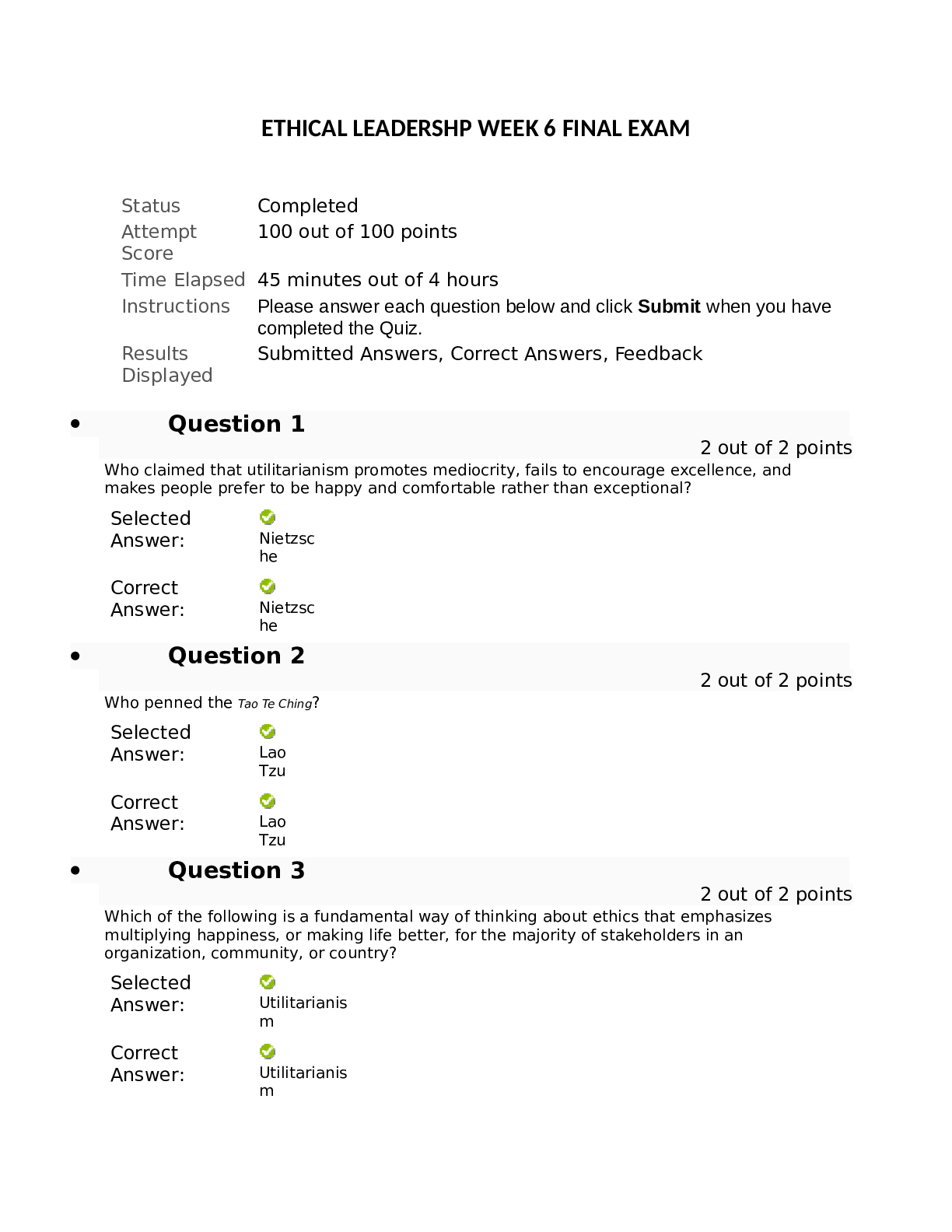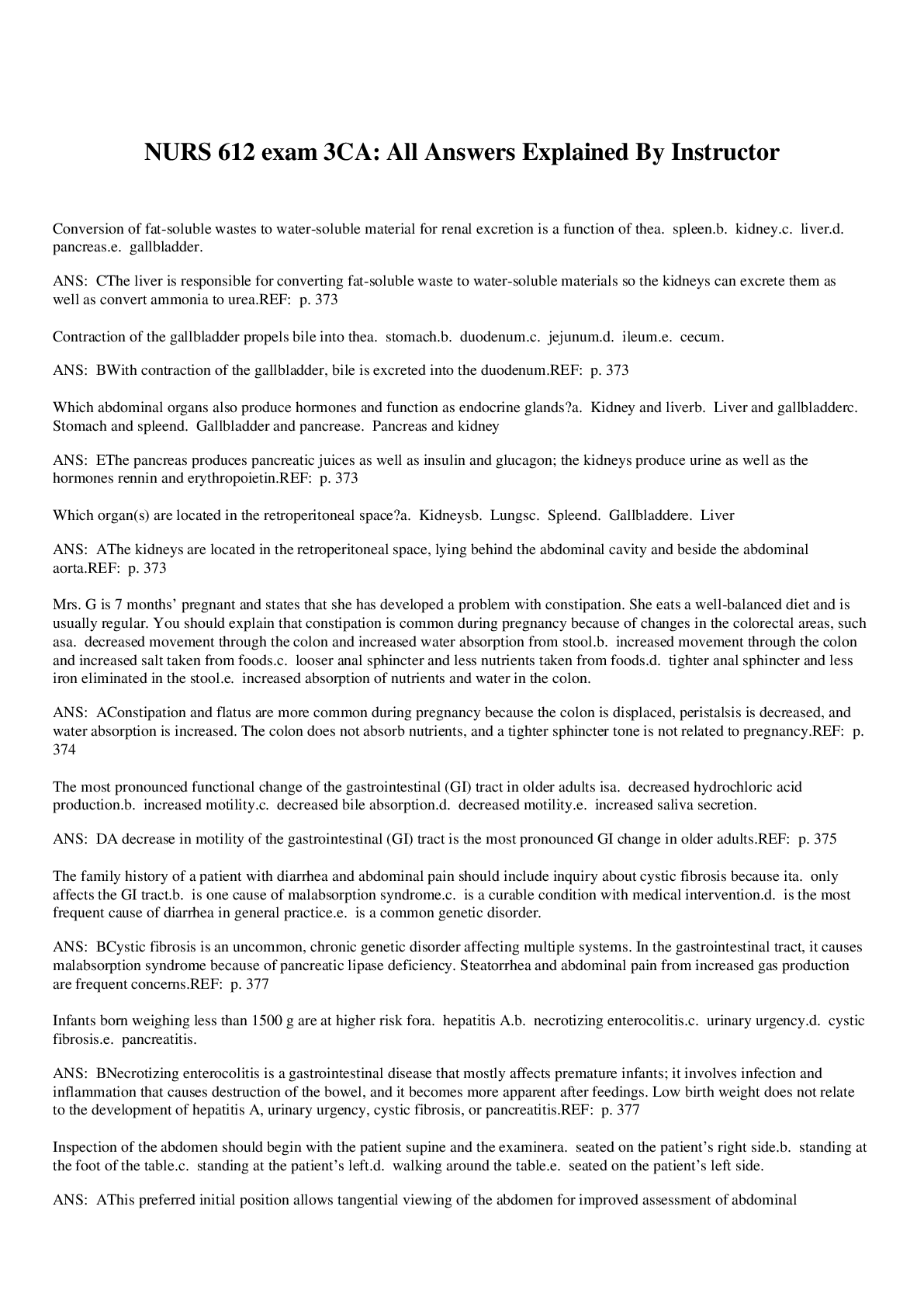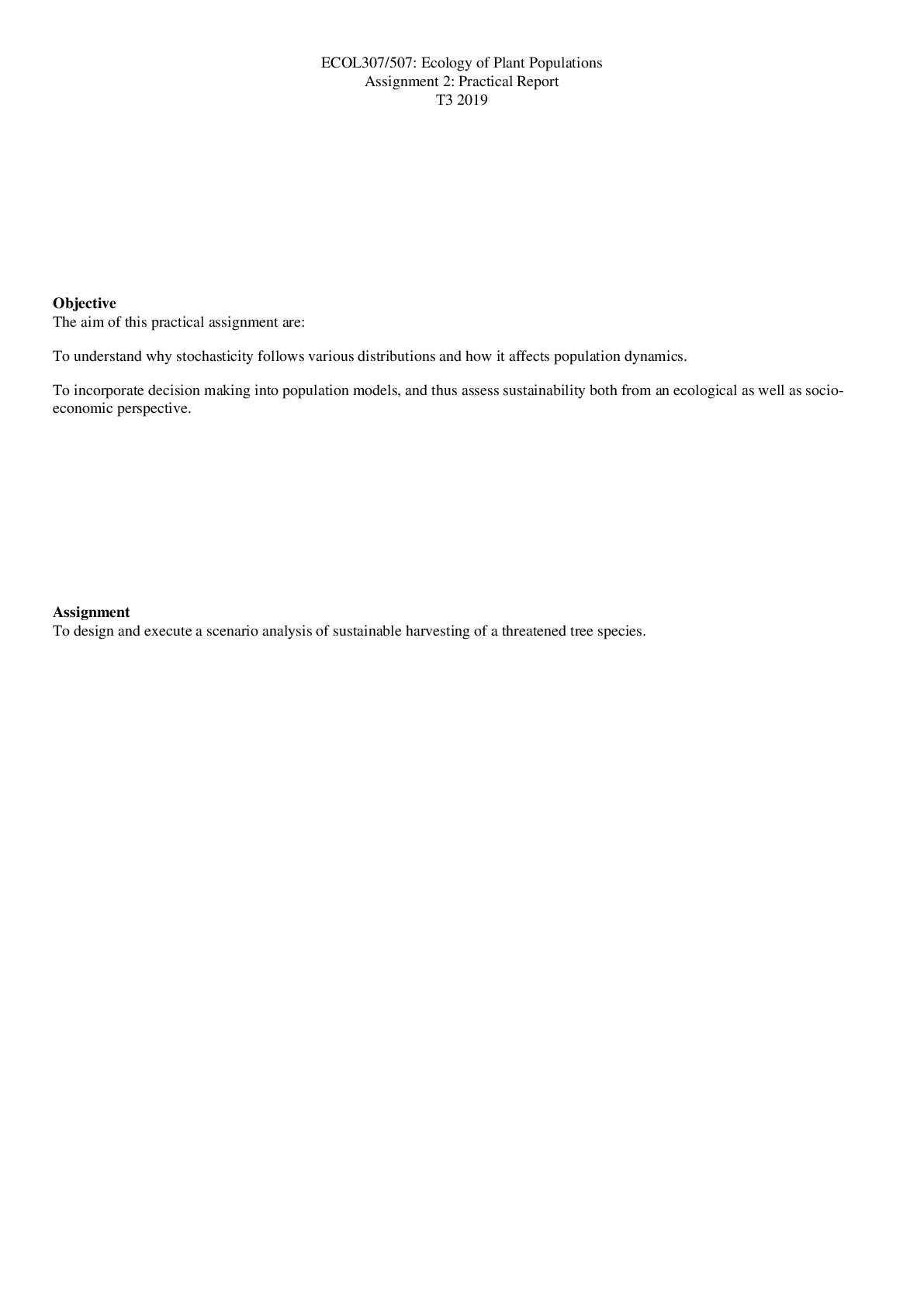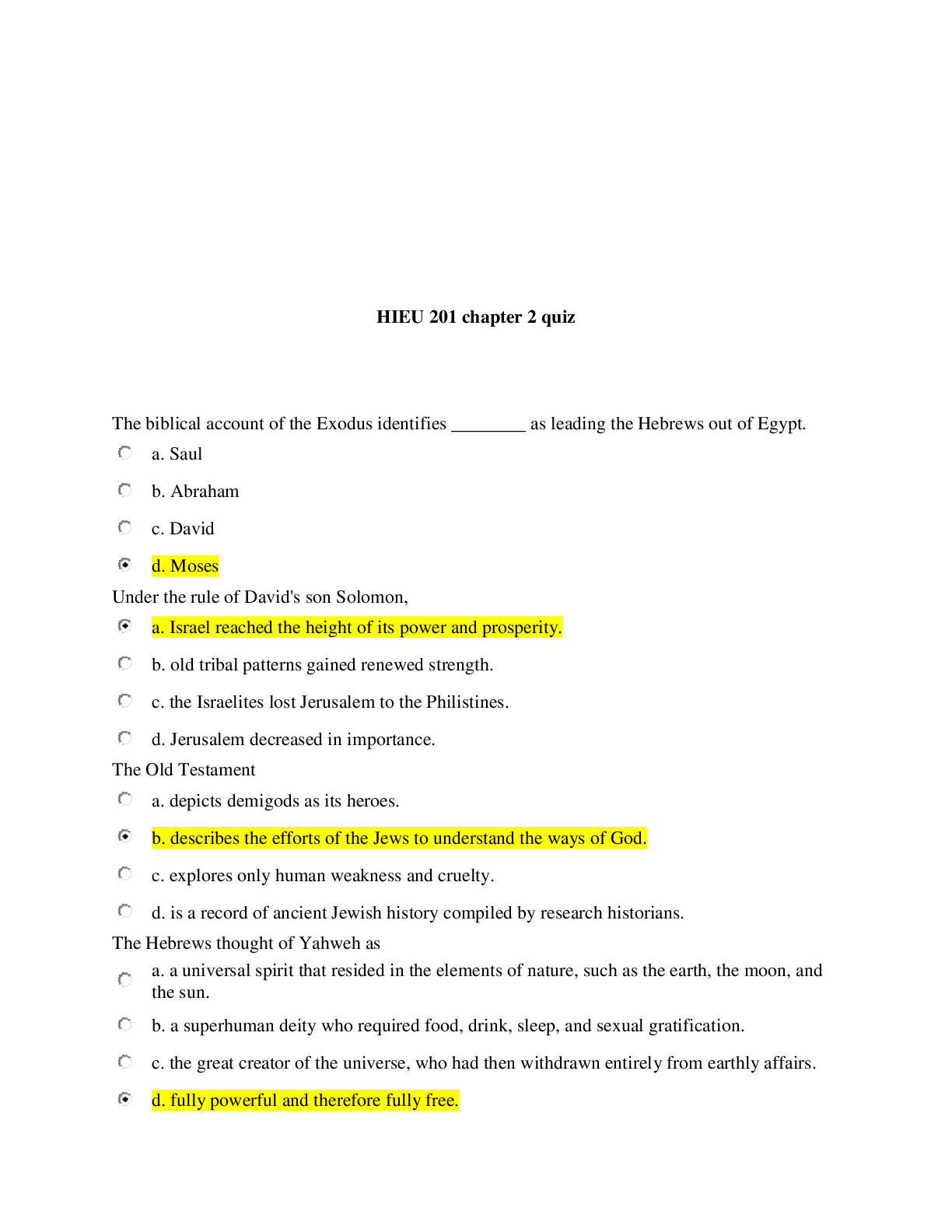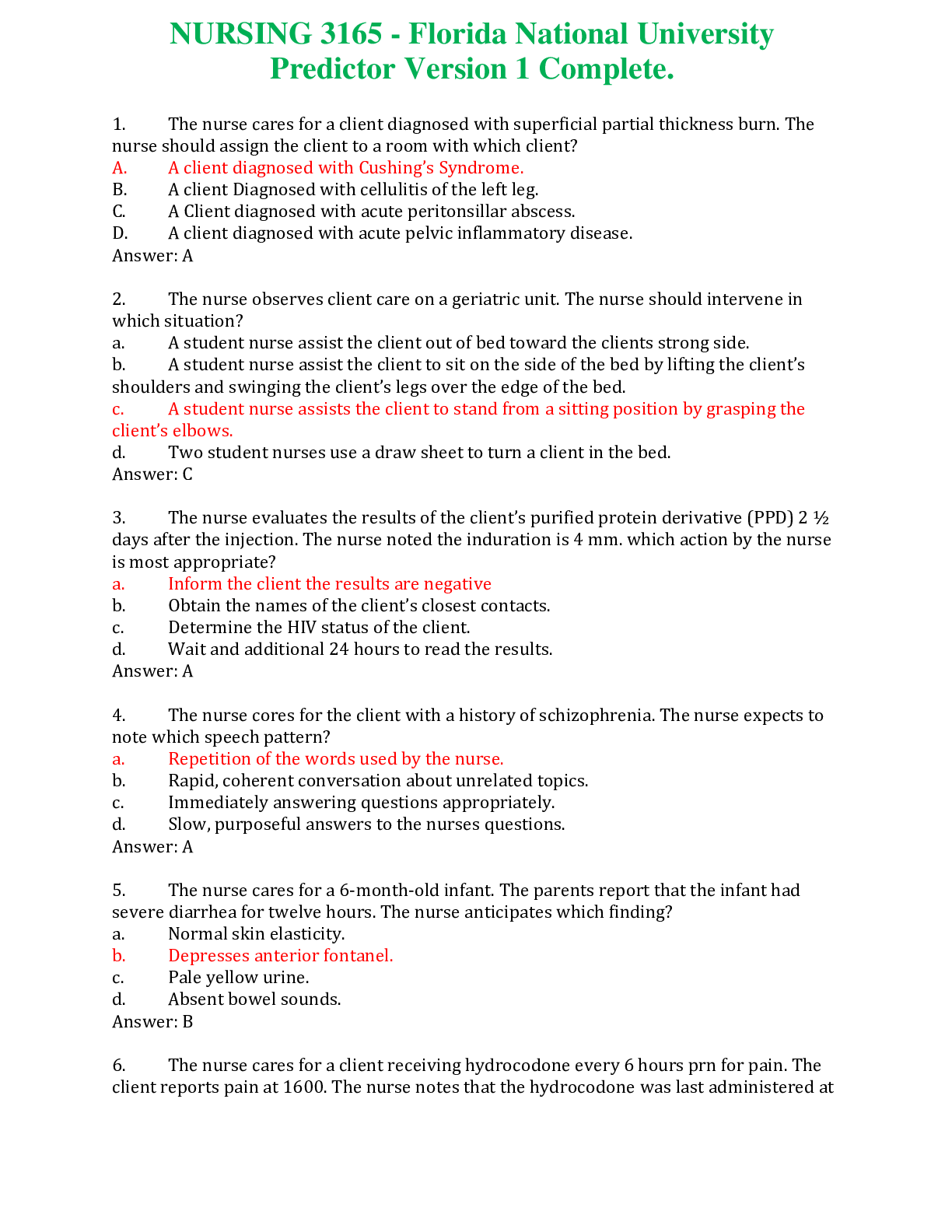*NURSING > QUESTIONS & ANSWERS > Syracuse UniversityEDU 603361061653-Post-Test-Atls (All)
Syracuse UniversityEDU 603361061653-Post-Test-Atls
Document Content and Description Below
1. Which of the following signs is LEAST reliable for diagnosing esophageal intubation? a Symmetrical chest wall movement b End tidal CO2 presence by colorimetry c Bilateral breath sounds d Oxyge... n saturation >92% e ETT above carina on chest x-ray 2. Which one of the following signs necessitates a definitive airway in severe trauma patients? a Facial lacerations b Repeated vomiting c Severe maxillofacial fractures d Sternal fracture e GCS score of 12 3. Twenty seven patients are seriously injured in an aircraft crash at a local airport. The principles of triage include: a Establish a triage site within the internal perimeter of the crash site b Treat only the most severely injured patients first c Immediately transport all patients to the nearest hospital d Treat the greatest number of patients in the shortest period of time e Produce the greatest number of survivors based on available resources 4. Which one of the following statements is correct? a Cerebral contusions may coalesce to form an intracerebral hematoma b Epidural hematomas are usually seen in frontal region c Subdural hematomas are caused by injury to the middle meningeal artery d Subdural hematomas typically have a lenticular shape on CT scan e The associated brain damage is more severe in epidural hematomas 5. An 18 year old male is brought to the emergency department after having been shot. He has one bullet wound just below the right clavicle and another just below the costal margin in the right posterior axillary line. His BP is 110/60 mmHg, HR is 90 bpm, and RR is 34 bpm. After ensuring a patent airway and inserting 2 large caliber iv line, the next appropriate step is to: a Obtain a portable chest x-ray b Administer a bolus of additional iv fluid c Perform a laparotomy d Obtain an abdominal CT scan e Perform diagnostic peritoneal lavage 6. An 8 year old boy falls 4,5 meters (15 feet) from a tree and is brought to the emergency department by his family. His vital signs are normal, but he complains of left upper quadrant pain. An abdominal CT scan reveals a moderately severe laceration of the spleen. The receiving institution does not have 24 hour a day operating room capabilities. The most appropriate management of this patient would be: a Type and crossmatch for blood b Request consultation of a pediatrician c Transfer the patient to a trauma center d Admit the patient to the ICU e Prepare the patient for surgery the next day 7. A 17 year old helmeted motorcyclist is struck broadside by an automobile at an intersection. He is unconscious at the scene with a BP of 140/90 mmHg, HR of 90 bpm, and RR of 22 bpm. His respirations are sonorous and deep. His GCS score is 6. Immobilization of the entire patient may include the use of all the following, except: a Air splints b Bolstering devices c ... d ... e ... 8. A construction worker falls from a scaffold and is transferred to the emergency department. His HR is 124 bpm and BP is 85/60 mmHg. He complains of lower abdominal pain. After assessing the airway and chest, immobilizing the c-spine and initiating fluid resuscitation, the next step is to perform: a FAST exam b Detailed neurological exam c Rectal exam d Cervical spine x-ray e Urethral catheterization 9. A 22 year old male sustains a shotgun wound to the left shoulder and chest at close range. His BP is 80/40 mmHg and his HR is 130 bpm. After 2 liters of crystalloid solution are rapidly infused, his BP increases to 122/84 mmHg, and HR decreases to 100 bpm. He is tachypneic with RR of 28 bpm. On physical examination, his breath sounds are decreased at the left upper chest with dullness on percussion. A large caliber (36 french) tube thoracostomy is inserted in the fifth intercostal space with the return of 200 ml of blood and no air leak. The most appropriate next step is to: a Insert a folley catheter b Begin to transfuse o-negative blood c Perform thoracotomy d Obtain a CT scan of the chest and abdomen e Repeat the physical examination of the chest 10. Which one of the following statements concerning spine and spinal cord trauma is true? a A normal lateral c-spine film excludes injury b A vertebral injury is unlikely in the absence of physical findings of a cord injury c A patient with a suspected spine injury requires immobilization on a short spine d Diaphragmatic breathing in an unconscious patient who has fallen is a sign of spine injury e Determination of whether a spinal cord lesion is complete or incomplete must be made in the primary survey 11. A 20 year old athlete is involve in a motorcycle crash. When he arrives in the emergency department, he shouts that he cannot move his legs. On physical examination, there are no abnormalities of the chest, abdomen or pelvis. The patient has no sensation in his legs and cannot move them, but his arms are moving. The patient’s RR is 22 bpm, HR is 88 bpm, and BP is 80/60 mmHg. He is pale and sweaty. What is the most likely cause of this condition? a Neurogenic shock b Cardiogenic shock c Abdominal hemorrhage d Myocardial contusion e Hyperthermia 12. A 28 year old male is brought to the emergency department. He was involved in a flight in which he was beaten with a wooden stick. His chest shows multiple severe bruises. His airway is clear, RR is 22 bpm, HR is 126 bpm, and SBP is 90 mmHg. Which of the following should be performed during the primary survey? a GCS b Cervical spine x-ray c TT administration d Blood alcohol level e Rectal exam 13. Which one of the following statements is true regarding access in pediatric resuscitation? a Intraosseous access should only be considered after five percutaneous attempts b Cut down at the ankle is a preferred initial access technique c Blood transfusion can be delivered through intraosseous access d Internal jugular cannulation is the next preferred opinion when percutaneous venous access fails e Intraosseous cannulation should be first choice for access 14. A 23 year old male is stabbed below the right nipple. He is alert, and his oxygen saturation is 98%. Chest tube was placed for treatment of hemopneumothorax. BP is 90/60 mmHg after administration of 1 L of crystalloid solution. What is the next step in treatment? a Re-examine the chest [Show More]
Last updated: 1 year ago
Preview 1 out of 6 pages
Instant download
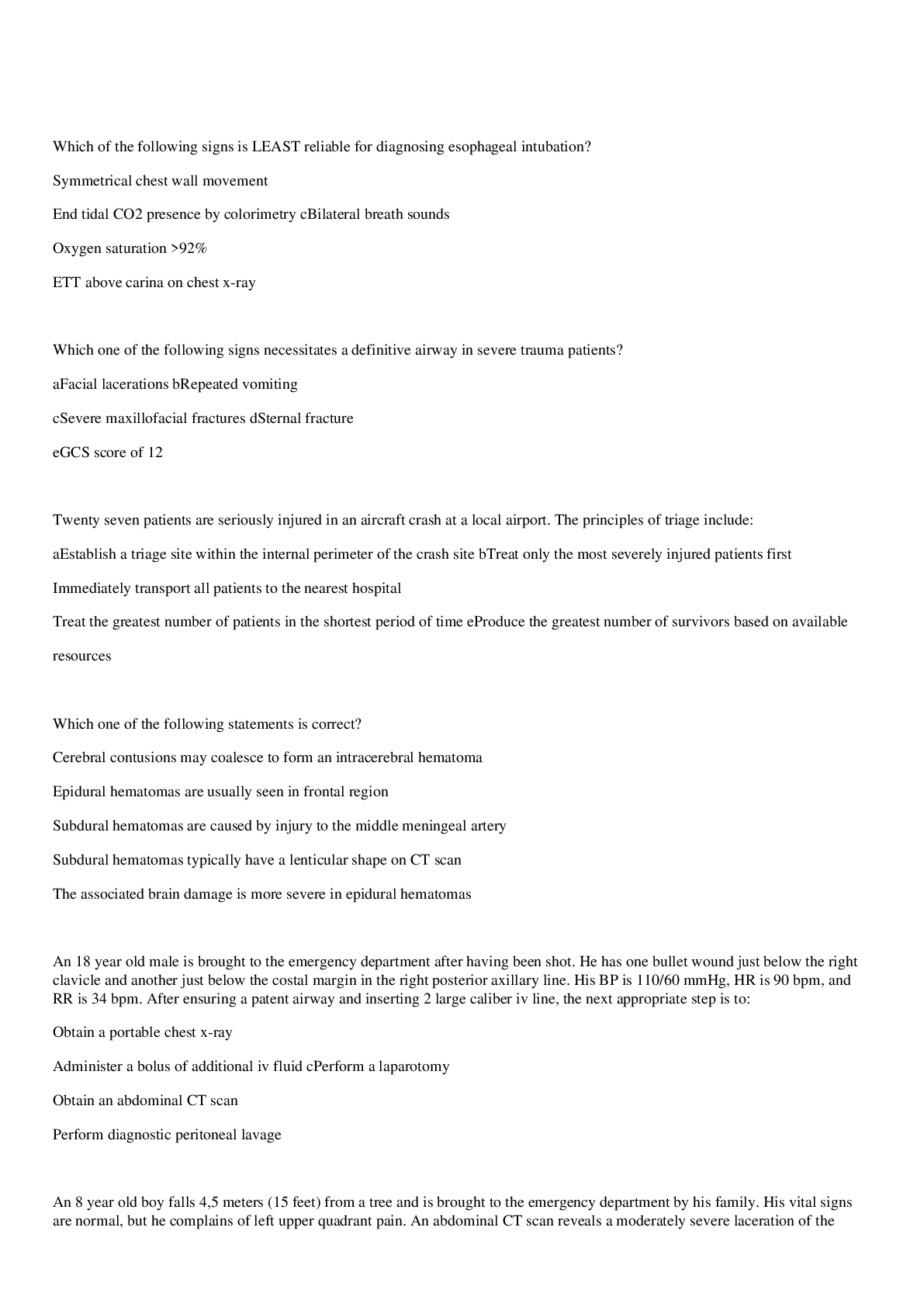
Buy this document to get the full access instantly
Instant Download Access after purchase
Add to cartInstant download
Reviews( 0 )
Document information
Connected school, study & course
About the document
Uploaded On
May 17, 2022
Number of pages
6
Written in
Additional information
This document has been written for:
Uploaded
May 17, 2022
Downloads
0
Views
54


